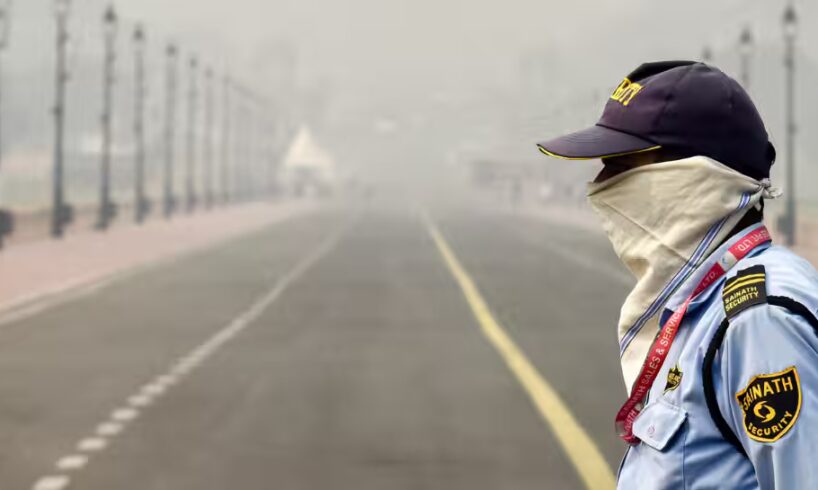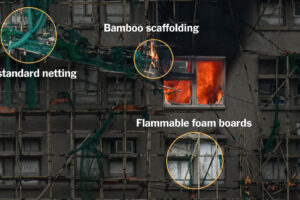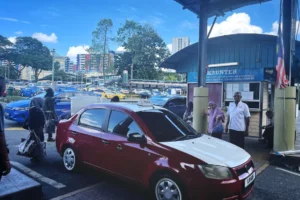
Delhi AQI Today: Delhi’s air quality reportedly continued to deteriorate on Tuesday morning, following Diwali celebrations the night before. The Air Quality Index (AQI) of several areas in the national capital was recorded in the “severe” category.
The forecast of the Central Pollution Control Board (CPCB) for the coming days indicates a similar trend. The data had predicted the air quality expected to deteriorate further into the “severe” category on Tuesday and Wednesday.
An AQI between 0-50 is considered good, 51-100 is satisfactory, 101-200 is moderate, 201-300 is poor, 301-400 is very poor and 401-500 is severe.
Add Zee News as a Preferred Source
AQI In Different Delhi Regions On Tuesday
1- Akshardham- 358 (‘Very Poor’ category)
2- Around India Gate- 342 (‘Severe’ category)
3- As per ANI, AQI around RK Puram was recorded at 368, in the ‘Very Poor’ category
4- ITO region- 259 (‘Poor’ category)
ANI reported, citing CPCB data that Bawana recorded AQI of 423 as of 8 am, Jahangirpuri had an AQI of 407 and Wazirpur with an AQI 408 remains the worst hit areas with air quality falling under ‘Severe’ category.
The AQI in Anand Vihar stood at 358, Ashok Vihar 389, Burari Crossing 399, Chandani Chowk 350, IGI Airport (Terminal 3) 302, ITO 342, Lodhi Road 322, Mundka 366, Najafgarh 336, Narela 358, Patparganj 342 and Punjabi Bagh 376.
#WATCH | Visuals from the India Gate as GRAP-2 invoked in Delhi.
The Air Quality Index (AQI) around the India Gate was recorded at 342, in the ‘Severe’ category, in Delhi this morning as per the Central Pollution Control Board (CPCB). pic.twitter.com/ZUwDCWpdT8
— ANI (@ANI) October 21, 2025
Delhi’s AQI On Diwali
According to the CPCB, Delhi recorded an Air Quality Index (AQI) of 335 at 8 am on Diwali morning.
The CPCB data of Monday evening showed Delhi’s AQI as 345 putting it in the “very poor” category.
Meanwhile, the neighbouring region’s data showed:
1. Faridabad- 182 (“moderate”)
2. Ghaziabad- 316 (“very poor”)
3. Noida- 325 (“very poor”)
4. Gurugram- 295 (“poor”)
Also Read: Delhi Celebrates ‘Cracker Diwali’ Pushing Air Quality Into ‘Very Poor’ Category
Health Risks As Air Pollution Rises
According to an IANS report, health experts have warned of an increase in respiratory diseases, stroke, and heart attack, among others, as the air quality in the national capital continues to get worse.
“Increased exposure to air pollution has both acute short-term and long-term impacts on health. Short-term impacts include exacerbation of asthma, Chronic Obstructive Pulmonary Disease (COPD), shortness of breath, and itching in the eyes. Long-term exposure leads to cardio-respiratory diseases, stroke, heart attack, dementia, and mental health issues,” Dr Harshal R Salve, Additional Professor at the Centre for Community Medicine at AIIMS, New Delhi, told IANS.
The expert noted that children and the elderly more than 60 years, and those with pre-existing illnesses are more vulnerable to the impact of air pollution.
Delhi’s GRAP 2 Measures
The air quality crisis in Delhi prompted the Commission for Air Quality Management (CAQM) in the NCR and adjoining areas to out Stage-II of the Graded Response Action Plan (GRAP) into motion.
As per a statement of Ministry of Environment, Forest and Climate Change, released on Sunday, the CAQM Sub-Committee urged the citizens to adhere to the following steps:
– Use public transport
– Use technology, take less congested route
– Regularly replace air filters at recommended intervals in automobiles
– Avoid dust generating construction activities during October to January
– Avoid open burning of solid waste and bio-mass
Further, a 12-point action plan as per Stage-II of extant GRAP was applied with immediate effect on Sunday in the entire NCR. This plan includes steps to be followed by various agencies including Pollution Control Boards of NCR States and DPCC. These steps include:
A. Carry out mechanical or vacuum sweeping and water sprinkling of the identified roads daily.
B. Intensify inspections for strict enforcement of dust control measures at C&D sites.
C. Ensure uninterrupted power supply
(with agencies’ inputs)





